Buy GHK-Cu Peptides Estonia
Ghk-Cu peptides, also known as copper peptides, are naturally occurring molecules found in human plasma. They are recognized for their significant roles in wound healing, skin repair, and anti-aging processes. Additionally, these versatile peptides are also being recognised for their potential benefits in neuroprotection, pain relief, organ protection and tissue regeneration.
Shop our Full Range of GHK-Cu Peptides
-
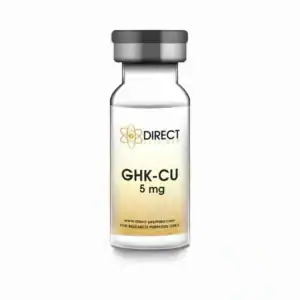
TWIN PACKS
TWIN PACKS
TWIN PACKS
New Reduced Price
New Reduced Price
New Reduced Price
TWIN PACKS
GHK-Cu Copper Peptide Vial
£15.00 – £76.48Price range: £15.00 through £76.48 This product has multiple variants. The options may be chosen on the product page -
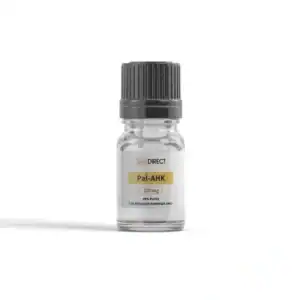
PAL-AHK (Topical)
£109.08 -
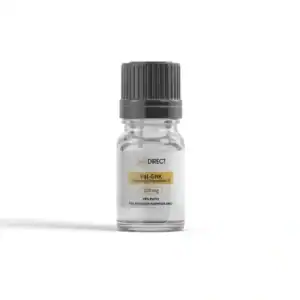
PAL-GHK (Topical)
£97.85 -
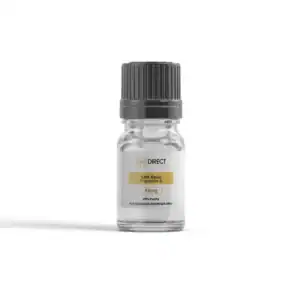
GHK Basic (Topical)
£24.70 -
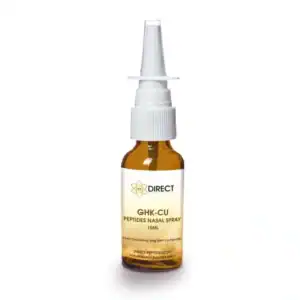
New Reduced Price
New Reduced Price
GHK-CU Nasal Spray
£23.00 – £41.00Price range: £23.00 through £41.00 This product has multiple variants. The options may be chosen on the product page -
Sale!
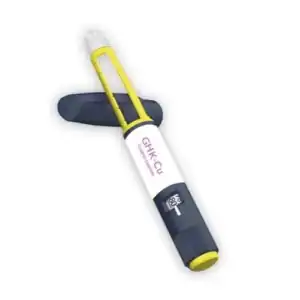
GHK-Cu Pre-Mixed Pen 5mg or 100mg
£17.58 – £189.22Price range: £17.58 through £189.22 This product has multiple variants. The options may be chosen on the product page -

GHK-Cu Capsules
£63.33 -

GHK-Cu (Topical)
£101.06 -
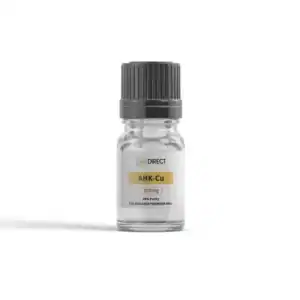
AHK-Cu (Topical)
£109.08 -
Sale!

TB500 GHK-Cu Peptide Stack
£25.83 – £34.81Price range: £25.83 through £34.81 This product has multiple variants. The options may be chosen on the product page -
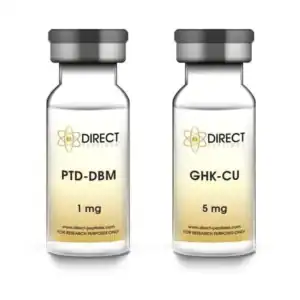 NEW
NEWPTD-DBM GHK-Cu Peptide Stack
£30.50 – £39.48Price range: £30.50 through £39.48 This product has multiple variants. The options may be chosen on the product page -
 NEW
NEWBPC-157 Thymosin Alpha-1 GHK-Cu Stack
£82.71Original price was: £82.71.£74.43Current price is: £74.43. -
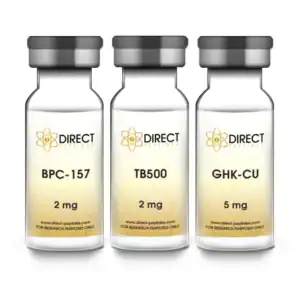 NEW
NEWBPC-157 TB500 GHK-Cu Vial stack
£40.16Original price was: £40.16.£36.14Current price is: £36.14.
What Is GHK-Cu?
GHK-Cu is a small copper tripeptide made up of the amino acids glycine, histidine, and lysine, commonly found in human plasma. This compound has gained attention in the scientific community for its regenerative and healing abilities.
GHK copper peptide is crucial for skin repair, wound healing, and tissue remodelling as it promotes collagen synthesis and acts as a strong antioxidant. It also has anti-inflammatory effects and is being researched for its potential in anti-aging treatments.
The copper peptide is also important for boosting the immune system, helping to protect against infections during healing. It also encourages angiogenesis, the creation of new blood vessels, which is essential for supplying nutrients and oxygen to tissues. This support is crucial for effective tissue regeneration and recovery.
GHK-Cu remains a key focus of research, especially in dermatology and regenerative medicine. Recent Estonia studies have also highlighted it’s potential cognitive benefits and anti-anxiety effects, suggesting it may contribute to improved mental health and neurological function.
Mechanism Of Action
GHK-Cu operates through a sophisticated interplay of biochemical interactions and molecular pathways that support its diverse biological effects. At its core, GHK copper peptide is known for its ability to enhance the body’s natural healing processes by promoting collagen production and accelerating tissue repair.
This process begins with the peptide binding to copper ions, creating a complex that activates a series of enzymatic reactions crucial for tissue regeneration. In addition to its influence on collagen synthesis, it also regulates the expression of genes responsible for anti-inflammatory responses and cellular repair mechanisms.
Its role in promoting angiogenesis, the formation of new blood vessels, further underscores its capacity to aid in healing by improving blood flow and nutrient supply to damaged tissues. Moreover, recent evidence suggests that the peptide may influence pathways involved in stem cell proliferation and differentiation, offering potential avenues for regenerative medicine.
This multifaceted action of GHK-Cu underscores its potential as a therapeutic agent across a variety of medical fields.
 Source: PubChem
Source: PubChem
Structure of GHK-Cu
Sequence: H-Gly-His-Lys-OH
Molecular Formula: C14H24N6O4
Molecular Weight: 340.38 g/mol
PubChem CID: 73587
What Are The Research Benefits of GHK-Cu Copper Peptide?
Antioxidant Properties: According to studies, the copper peptide has been found to have significant antioxidant properties, helping in the prevention of oxidative stress and degenerative conditions related to aging. Research indicates that this has implications for cognitive health as the peptide can pass the blood-brain barrier [1].
Wound Healing Applications: Due to its ability to promote angiogenesis and modulate inflammatory responses, GHK-Cu significantly enhances the wound healing process. It not only accelerates the repair phases but also aids in minimizing scar tissue formation, evening skin tone and resulting in more effective tissue regeneration and increased production of collagen [2].
Improved Skin Repair and Anti-aging: According to research, it integrated with ionic liquids (ILs) showed benefits in improving skin repair ability and anti-aging effects [3].
Numerous clinical studies indicate that GHK-Cu effectively rejuvenates aging skin. One study, involving 71 women exhibiting various signs of photoaging, revealed that a facial cream containing GHK-Cu improved skin density and thickness, reduced laxity, enhanced clarity, and diminished fine lines and wrinkles, highlighting its potential in anti-aging skincare.
In another study with 20 women, GHK-Cu demonstrated superior efficacy compared to vitamin C and retinoic acid in boosting collagen levels in photoaged skin, leading to significant improvements in skin elasticity and texture while showcasing its robust anti-aging properties.
Additionally, a clinical trial involving 41 women found that a GHK-Cu eye cream significantly enhanced the area around the eyes over a 12-week period, outperforming both a placebo and a vitamin K cream.
Protection Against UV Radiation: GHK-Cu demonstrates the ability to protect cells from the harmful effects of UV radiation. By enhancing the skin’s natural defense mechanisms and promoting the repair of DNA damage caused by UV exposure, GHK-Cu may help reduce the risk of UV-induced skin ageing and skin cancer, thereby contributing to its potential use in sun protection formulations [4].
Hair Growth Stimulation: Research findings indicate that the application of GHK-Cu peptide therapy exhibits noteworthy advantages in the promotion of hair growth through fortifying hair follicles, presenting a potential avenue for mitigating hair loss [4].
Anti-aging Potential: GHK-Cu has been identified as a potential anti-aging peptide. Its long-term effects could have high impact on slowing aging [5].
Dermal Keratinocyte Proliferation: GHK copper peptide stimulates the proliferation of dermal keratinocytes, essential for skin health and repair. By promoting the growth and turnover of these cells, it supports skin regeneration and strengthens the epidermal barrier, making it valuable in dermatological treatments for improving skin texture and resilience [6].
Gene Regulation: The peptide plays a vital role in regulating gene expression. It acts as a master regulator, boosting genes involved in cellular repair, reducing inflammation, and promoting tissue regeneration, while down-regulating genes that trigger unwanted inflammatory responses.
GHK-Cu’s positive effect on gene activity supports essential biological processes that enhance its therapeutic effects. Its precise control over gene expression makes it a promising candidate for gene therapy research with potential medical and aesthetic applications. [4].
Tissue Remodeling: Studies suggest a role for GHK and copper peptides in tissue remodeling, although the optimal conditions for its use are still being determined [7].
Anti-inflammatory Effects: It has been demonstrated in research to have protective effects in bleomycin-induced pulmonary fibrosis via anti-oxidative stress and anti-inflammation pathways [8].
Collagen IV Upregulation: The synergy of GHK-Cu and hyaluronic acid (HA) has been observed in experiments to upregulate collagen IV, as revealed by cell and ex-vivo skin tests [9].
Buy GHK-Cu peptide vial, available in 5mg, 50mg and 100mg for research online today!
Buy GHK-Cu PTD-DBM Peptide Stack
Buy GHK-Cu PTD-DBM peptide stack online Estonia from Direct Peptides and discover the benefits of this powerful blend of peptides and copper ions.
- This innovative stack is known for improving skin health and appearance by boosting collagen production, which enhances skin elasticity and reduces fine lines and wrinkles.
- It also aids in wound healing and tissue regeneration, making it important in dermatology.
- The anti-inflammatory properties of the peptide stack help soothe skin irritation and redness.
- Additionally, it promotes hair growth by stimulating follicle stem cells, increasing keratin production, and improving scalp health.
- Beyond cosmetic advantages, this peptide stack supports cellular health and function, making it essential in researching regenerative medicine and other therapeutic areas.
- With its wide ranging benefits for skin, hair, and cellular function, the GHK-Cu PTD-DBM peptide stack is a valuable addition to advanced skincare and medical research.
Buy GHK-Cu Peptide Nasal Spray
Buy GHK-Cu Nasal Spray, available in 15ml and 30ml glass bottles, designed to improve absorption and effectiveness.
- By using the vascular network in the nasal cavity, these sprays allow for quick and efficient absorption into the body.
- This method avoids first-pass metabolism, which can enhance bioavailability compared to traditional delivery methods.
- GHK-Cu nasal sprays are especially useful for situations that need systemic effects, like cognitive enhancement and neuroprotection, as they can more effectively cross the blood-brain barrier.
- By supporting anti-inflammatory and regenerative processes at the cellular level, GHK-Cu nasal sprays present a promising option for improving therapeutic strategies and clinical results.
Buy GHK-Cu Capsules
Buy GHK-Cu Capsules online Estonia from Direct Peptides for research on regeneration and healing.
- These capsules are designed to assess the absorption of GHK-Cu and its possible health benefits, including strong antioxidant support, increased collagen production, and reduced inflammation.
- While early studies focused on cosmetic and anti-aging effects, recent research is broadening the scope of its applications to encompass wound healing, tissue regeneration, and organ protection.
- This ongoing exploration positions GHK-Cu capsules as a promising option for future therapies, with current studies actively investigating their capacity to improve health and promote longevity.
Peptide Structure of GHK-Cu Capsules
Source: PubChem
Sequence: Gly-His-Lys-(CU2+)
Molecular Formula: C16H28CuN6O6-2
Molecular Weight: 463.98 g/mol
PubChem CID: 156588903
Frequently Asked Questions (FAQs) about GHK-Cu
Do copper peptides really work?
Copper peptides, especially GHK, demonstrate potential benefits in skincare and regenerative medicine, including enhanced collagen production, wound healing, and antioxidant properties. While promising, individual results may vary, and further research is needed to understand their long-term effects.
Are there any side effects associated with GHK-Cu?
This peptide is generally considered safe for clinical use, with most subjects not experiencing adverse effects. However, researchers should proceed with caution due to potential variability in individual responses.
It’s important to consult healthcare professionals, especially when involving participants with sensitive skin or allergies, to ensure responsible exploration of it’s therapeutic potential while prioritizing participant safety.
Is GHK-cu peptide legal to buy?
GHK-Cu peptides are legal to purchase, though regulations and availability can vary by region. In many countries, they are classified as cosmetic ingredients and are commonly found in over-the-counter skincare products like serums and creams, known for their skin rejuvenating properties. However, for uses beyond cosmetics, such as in clinical settings, the regulatory landscape is more complex.
In the United States, GHK-Cu products must comply with FDA guidelines, while in the UK, MHRA regulations apply. It’s important for consumers and professionals to source these peptides from reputable suppliers and verify any specific regulations in their area regarding research or therapeutic use. Consulting with a relevant authority or healthcare professional is recommended to ensure compliance with local laws and guidelines.
Where is the best place to buy GHK-Cu?
You can buy GHK-Cu peptides online Estonia from Direct Peptides, a reputable supplier of premium quality products. They offer a diverse range of GHK-cu peptides including, topicals, injectables such as vials and pre-mixed pens, nasal sprays, oral capsules and even stacks for synergistic effects with other peptides.
What Is GHK-Cu Topical Peptide?
GHK-Cu topical peptide refers to the application of the GHK-Cu compound directly onto the skin for cosmetic and therapeutic benefits.
- This formulation leverages the peptide’s natural properties to enhance skin health by delivering its active components more efficiently to the target areas.
- By stimulating collagen production and promoting wound healing, GHK topical treatments aim to improve skin texture, reduce the appearance of fine lines and wrinkles, and support skin regeneration.
- Its anti-inflammatory and antioxidant benefits further make it an effective solution for addressing various skin concerns, positioning it as a valuable addition to skincare regimens.
Buy GHK-Cu topical peptide online from Direct Peptides Estonia.
Summary of Research Applications
- Anti-aging potential
- Increases gene expression
- Improves skin regeneration
- Protects skin cells from UV radiation
- Can be applied topically in cosmetics such as eye creams and serums to improve appearance of aging skin
- Helps to stimulate the healing of wounds
- Promotes nerve growth and stimulates the growth of blood vessels in areas of injury
- Has been to have anti-inflammtory and antioxidant properties relating to wounds
- Promotes tissue regeneration in COPD and other lung related injuries
- Has protective properties against heart disease
- Has been to possess anti-cancer properties
- Can reduce anxiety
Buy GHK-Cu Pre-Mixed Peptide Pen, available in 5mg and 100mg online Estonia.
GHK-Cu Peptide Quality Assured
At Direct Peptides, we are committed to high-quality GHK-Cu peptides. Our approach ensures our products exceed industry standards for purity and effectiveness, with a minimum purity of 98%.
Each batch is produced using advanced synthesis methods to maintain the structural integrity and biological activity of our formulations. This strict quality control bolsters our reputation for reliability and enhances the therapeutic potential of this copper peptide.
When you choose to buy GHK-Cu peptides from us, you’re investing in top-quality products that yield accurate research results and promote advancements in dermatology and regenerative therapies.
With our commitment to excellence, we provide researchers with products that support their work and ensure successful scientific outcomes.
References For Further Reading
[1] Loren Pickart, Jessica Michelle Vasquez-Soltero, and Anna Margolina (2012) The Human Tripeptide GHK-Cu in Prevention of Oxidative Stress and Degenerative Conditions of Aging: Implications for Cognitive Health – Oxidative Medicine and Cellular Longevity, 2012, Issue 2012, Page 324832.
[2] L Sun, A Li, Y Hu, Y Li, L Shang, and L Zhang (2019) Self-Assembled Fluorescent and Antibacterial GHK-Cu Nanoparticles for Wound Healing Applications – Particle and Particle Systems Characterization, 27 February 2019, Volume 36, Issue 4, Page 1800420.
[3] Tianqi LiuLiguo ZhangBeibei LuDeping LiYiyang Bo, et al (2022) Noninvasive and Efficient Peptide Delivery by a Novel Biocompatible Ionic Liquid – ACS Sustainable Chemical Engineering, 2022, Volume 10, Issue 50, Pages 16611–16623.
[4] Loren Pickart and Anna Margolina (2018) Regenerative and Protective Actions of the GHK-Cu Peptide in the Light of the New Gene Data – International Journal of Molecular Sciences, 2018 Jul, Volume 19 (Issue 7), Page 1987.
[5] Yan Dou, Amanda Lee, Lida Zhu, John Morton, and Warren Ladiges (2022) The potential of GHK as an anti-aging peptide – Aging Pathobiology and Therapeutics, 2020 Mar 27, Volume 2 (Issue 1), Pages 58–61.
[6] Loren Pickart, Jessica Michelle Vasquez-Soltero, and Anna Margolina (2015) GHK Peptide as a Natural Modulator of Multiple Cellular Pathways in Skin Regeneration – Biomed Research International, 07 July 2015, 2015 Issue, Page 648108.
[7] Loren Pickart (2008) The human tri-peptide GHK and tissue remodeling – Journal of Biomaterials Science Polymer Edition, 2008, Volume 19 (Issue 8), Pages 969-88.
[8] Wen-Hui Ma 1, Meng Li 2, Hai-Feng Ma 1, Wei Li 1, Li Liu, et al (2020) Protective effects of GHK-Cu in bleomycin-induced pulmonary fibrosis via anti-oxidative stress and anti-inflammation pathways – Life Sciences, 2020 Jan 15, Volume 241, Page 117139.
[9] Fangru Jiang, Yanan Wu, Zhe Liu, Minhua Hong, and Yi Huang (2023) Synergy of GHK-Cu and hyaluronic acid on collagen IV upregulation via fibroblast and ex-vivo skin tests – Journal of Cosmetic Dermatology, 2023 Sep, Volume 22 (Issue 9), Pages 2598-2604.
Why Choose Direct Peptides Estonia?
Buy GHK-Cu today and discover top quality with Direct Peptides, your trusted source for premium GHK-Cu peptides. Our unique range includes lyophilized powders in vials, pre-mixed injectable solutions in needle pen form, oral capsules, and topical formulations, all available in different concentrations to suit various research and cosmetic needs.
We aim to support specific project requirements by providing researchers access to high-quality, scientifically validated formulations. With our focus on excellence, you can trust in the highest purity and potency for successful research and applications in dermatology and therapy.
GHK-Cu is not the only topical skin peptide we offer. Discover the full range of Topical Peptides online Estonia from Direct Peptides today!
ALL CONTENT AND PRODUCT INFORMATION AVAILABLE ON THIS WEBSITE IS FOR EDUCATIONAL PURPOSES ONLY.
DISCLAIMER: These products are intended solely as a research chemical only. This classification allows for their use only for research development and laboratory studies. The information available on our Estonia Direct Peptides website: https://direct-peptides.com is provided for educational purposes only. These products are not for human or animal use or consumption in any manner. Handling of these products should be limited to suitably qualified professionals. They are not to be classified as a drug, food, cosmetic, or medicinal product and must not be mislabelled or used as such.
Related Posts
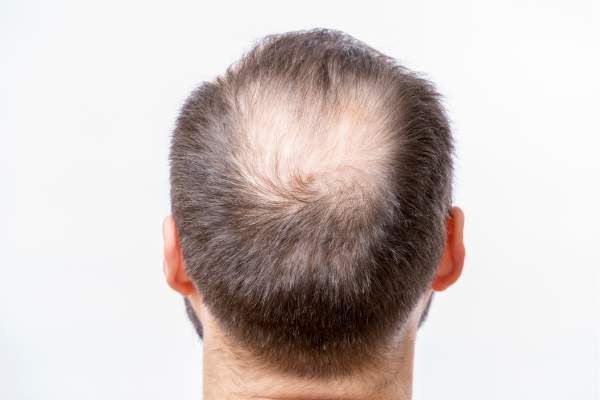
Boost Hair Growth and Prevent Hair Loss With GHK-Cu
This blog explores the science behind copper peptides, such as GHK-Cu and PTD-DBM, and their potential to promote hair growth and improve scalp health. It highlights their role in follicle regeneration, collagen production, and DHT regulation, offering a research-based perspective on their future applications in combating hair loss.

What Are Topical Peptides In Skincare?
This blog explores topical peptides and their importance in skincare, particularly for anti-aging, as they enhance skin health by boosting collagen, promoting cell renewal, and providing environmental protection. Ongoing research suggests these bioactive compounds could lead to personalized and effective skincare solutions, marking a major development in both cosmetic and therapeutic applications.

Oral GHK-Cu Capsules: Copper Peptides For Skin
This blog explores the use of oral GHK-Cu capsules in skincare, highlighting their potential benefits for achieving youthful, glowing skin. It covers the science of copper peptides, specifically GHK-Cu's ability to regenerate skin, as well as challenges related to bioavailability and how oral GHK-Cu enhances absorption.

